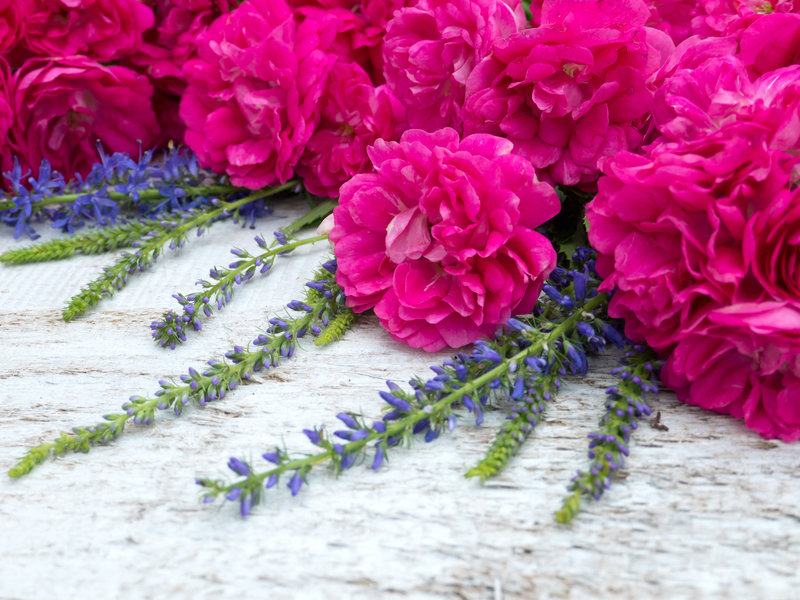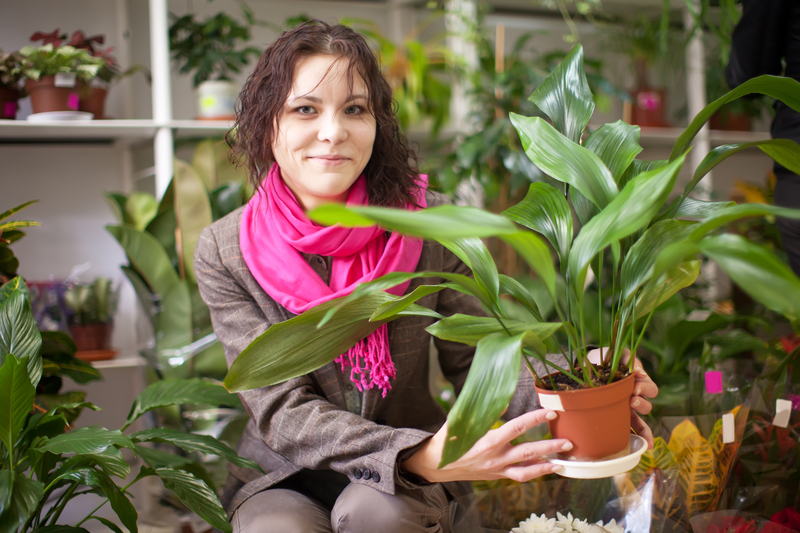Create functional and aesthetic garden seating experiences
Posted on 16/09/2025
Create Functional and Aesthetic Garden Seating Experiences
Transforming a garden into an inviting and expressive outdoor space is a dream for many homeowners and landscapers. One of the most impactful ways to realize this vision is by designing functional and aesthetic garden seating experiences. With the right planning, you can turn any garden--large or small--into a haven of comfort, beauty, and usability.

Understanding the Importance of Garden Seating
Garden seating isn't just a place to sit--it's an opportunity to enhance your garden's ambiance, increase its functionality, and encourage people to spend more time outdoors. A thoughtfully designed seating area can:
- Provide Relaxation: Give friends and family a tranquil spot to unwind, read, or socialize.
- Showcase Viewpoints: Emphasize beautiful garden features such as flower beds, water elements, or sculptures.
- Add Structure: Define different areas within your outdoor space for dining, lounging, or contemplation.
- Increase Value: Well-designed seating can add to your property's appeal and overall market value.
But how do you blend both function and beauty for the best results? This comprehensive guide delves into practical tips, creative ideas, and inspiration for creating the ultimate garden seating experience.
Planning Your Functional and Aesthetic Garden Seating
1. Assess Your Garden's Layout and Environment
Before choosing garden seating options, study your garden's layout and consider:
- Sun and Shade Patterns: Identify spots that offer comfortable sunlight or natural shade throughout the day.
- Size and Scale: Measure the area to ensure your seating fits proportionally without overwhelming the space.
- Accessibility: Ensure that paths leading to your seating area are clear and easy to navigate.
2. Define the Purpose of Your Garden Seating
- Socializing: For gatherings, opt for larger benches, outdoor sofas, or modular seating arrangements.
- Solitude: For reflection or reading, consider a cozy nook with a single chair or hammock.
- Dining: If you plan to eat outdoors, sturdy tables with comfortable chairs or benches are essential.
Tip: Multifunctional seating such as storage benches or movable stools maximize both utility and space efficiency.
3. Select Materials That Complement Your Garden's Aesthetic
The material you select for your garden seating can dramatically impact both its look and durability. Common options include:
- Wood: Natural and timeless, wood blends seamlessly with most gardens. Choose teak, cedar, or eucalyptus for weather resistance.
- Metal: Wrought iron or aluminum offers a classic, ornate feel while requiring minimal maintenance.
- Stone and Concrete: For a contemporary or rustic vibe, stone benches or concrete blocks provide permanence and a sculptural element.
- Synthetic Materials: Modern options like resin wicker or recycled plastic provide durability with less maintenance and many color choices.
Ensure all materials are treated or suitable for outdoor use to withstand the elements.
Creative Ideas for Garden Seating Experiences
1. Built-In Benches
Integrated benches along garden walls, raised beds, or around fire pits can create seamless lines while maximizing space. These permanent seating options are ideal for small gardens or patios. They can be topped with colorful cushions for extra comfort and seasonal flair.
2. Garden Sofas and Lounge Areas
For large gardens, consider modular outdoor sofas and lounge furniture. Arrange them under pergolas or arbours for shade, adding side tables or ottomans to create a living room atmosphere outdoors. Mix and match cushions in weatherproof fabrics to reflect your personal style.
3. Movable Chairs and Hammocks
Portable chairs, steamer loungers, and hammocks bring flexibility to your garden. You can follow the sun--or the shade--throughout the day, and store them during bad weather. Hammocks, especially, offer a sense of retreat and relaxation under tree canopies or on covered patios.
4. Sculptural and Whimsical Seating
Make a bold statement with seating that doubles as garden art. Stone boulders, reclaimed logs, or upcycled metal seats bring a touch of the unexpected. Painted wooden benches, mosaic-tiled stools, or brightly colored chairs can brighten dull corners and delight visitors.
5. Dining and Picnic Areas
For alfresco dining, choose robust tables surrounded by benches or stackable chairs. Position your dining set near the kitchen or grill for convenience. For a cozy twist, opt for a picnic bench under a tree or beside a water feature for a natural dining experience.
Enhancing Comfort and Usability
1. Add Shade and Shelter
Even the most functional and beautiful garden seating experiences fall short if comfort is compromised. Consider:
- Pergolas: Provide dappled shade and a structure for climbing plants.
- Umbrellas or Sailcloths: Easy-to-install options for flexible shade.
- Gazebos or Covered Arbours: Offer shelter from sun and rain for year-round enjoyment.
2. Incorporate Lighting
Lighting extends the usability of your seating area into the evening. Try:
- Solar Lights: Eco-friendly and wireless, ideal for paths and outlining benches.
- String Lights: Bring a magical glow draped above or around the seating area.
- Lanterns and Candles: Great for intimate gatherings and adding a romantic touch.
3. Add Cushions, Throws, and Accessories
Accessories make a world of difference in both comfort and style. Choose weatherproof throws, cushions, and rugs in vibrant or calming colors depending on your garden's theme. Think about small side tables for drinks and books, or planters with aromatic herbs for sensory delight.
Planting and Landscaping Around Garden Seating
The right plants can soften hard edges, provide privacy, and enhance the sensory appeal of your seating area. Consider these ideas for integrating nature with your design:
- Hedges and Shrubs: Frame your seating area with boxwoods, laurels, or ornamental grasses for privacy and structure.
- Climbing Plants: Roses, clematis, wisteria, or grapevines create shade, color, and fragrance on pergolas or trellises.
- Container Plants: Use pots of seasonal flowers, dwarf trees, or herbs to add color and variety.
- Aromatic Plants: Lavender, rosemary, jasmine, or mint offer pleasant scents that enhance relaxation.
Remember to choose low-maintenance plants if your priority is hassle-free upkeep.
Accessible and Inclusive Garden Seating Solutions
An inclusive seating design ensures that everyone can enjoy your outdoor space, regardless of age or ability. Implement these strategies:
- Accessible Paths: Build smooth, wide paths with gentle slopes for wheelchairs and strollers.
- Raised Seating: Use higher benches or chairs with armrests for those who need extra support.
- Stable Footings: Install non-slip materials under all seating.
Child-Friendly and Pet-Safe Features
- Position seating away from thorny or poisonous plants.
- Choose rounded-edged furniture and secure fixings.
- Allow open play spaces and pet-safe areas within view of seating zones.
Maintaining Your Garden Seating
Even the most well-crafted and stunning garden seating requires regular upkeep to retain its function and charm. Here's how to look after your garden seating and keep it inviting year after year:
- Wooden Furniture: Oil or seal annually to prevent mold and weathering.
- Metal Seating: Clean and touch up with rust-resistant paints if required.
- Cushions and Fabrics: Store indoors during winter months or inclement weather.
- Stone and Concrete: Clean moss and algae with mild detergent and water.
- Check Fixings: Tighten bolts and screws regularly to keep benches and chairs secure.
Sustainable and Eco-Friendly Garden Seating Choices
Environmentally responsible options are rising in popularity for their minimal impact and contemporary appeal. Choose sustainably sourced wood, recycled plastic, or upcycled materials for your garden furniture. Combine native plants and permeable paving around seating areas to support local wildlife and reduce water runoff.

Personalizing Your Garden Seating Experience
If you really want your garden seating to stand out, infuse personality and creativity into the area. Some ideas include:
- Themed Corners: Mediterranean tiles, Zen gravel gardens, or bohemian textiles can reflect your personal tastes and travels.
- Artwork: Sculptures, painted murals, or DIY mosaics bring individuality and charm.
- Seasonal Changes: Rotate accessories or plantings to keep your garden seating feeling fresh year-round.
- DIY Projects: Custom-build your own benches, paint old furniture, or assemble pallet sofas for a bespoke look.
Conclusion: Building Functional and Aesthetic Garden Seating for Lasting Enjoyment
Creating a functional and aesthetic garden seating experience is an outstanding way to elevate your outdoor living area. By combining well-planned layouts, sustainable materials, and personal touches, you'll establish a destination in your garden that is not only practical but also a feast for the senses. Whether you're seeking a spot for quiet reading, family gatherings, or celebration with friends, thoughtful garden seating brings both beauty and utility--creating a space that's loved and enjoyed all year round.
Ready to shape your ideal garden retreat? Start planning today and let your garden seating vision take root for years of restful, social, and inspiring moments right outside your door.



